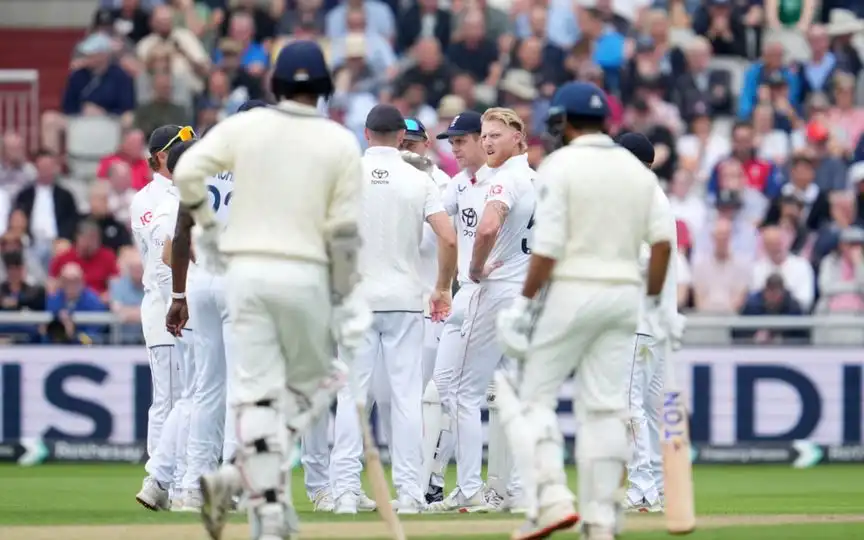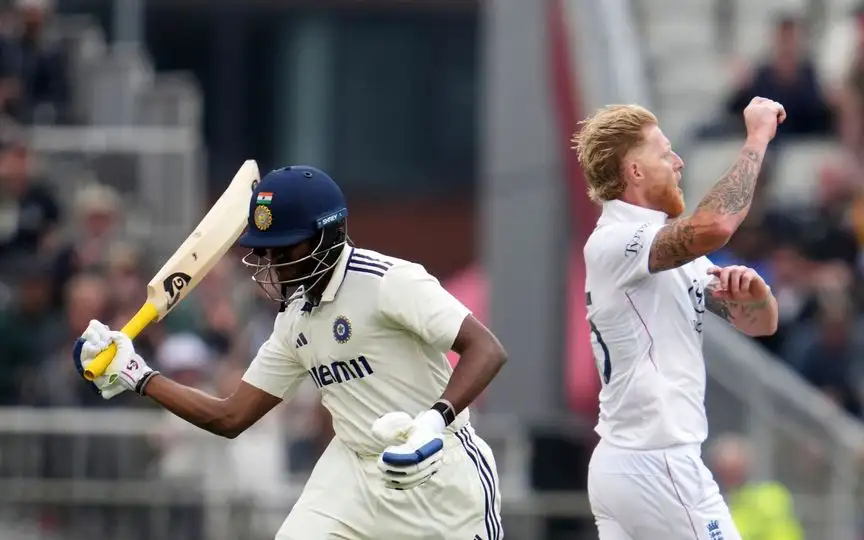![Indian team in Manchester [Source: AP Photos]](https://onecricketnews.akamaized.net/parth-editor/oc-dashboard/news-images-prod/1753534537155_Indian_team(1).jpg?type=hq) Indian team in Manchester [Source: AP Photos]
Indian team in Manchester [Source: AP Photos]
India's capitulation at Old Trafford has left cricket fans bewildered. After England piled up 669 runs against bowling that looked toothless, the visitors trail by 310 runs with eight wickets remaining at lunch on Day 4. Redemption in this game seems like a mathematical possibility but a practical impossibility.
What makes this collapse particularly damning isn't just the result, but the series of inexplicable decisions that led to it. From team selection to tactical execution, India's approach has raised more questions than it has provided answers, exposing systemic issues that go far beyond logic.
The Selection Circus: Why Gamble When the Stakes Are Highest?
Why was Anshul Kamboh, who was not even in the squad a week earlier, handed the new ball ahead of Mohammed Siraj? The debutant's figures—1/89 in 18 overs with an economy rate of 4.94—tell only part of the story. His pace dropped from what he showed in the IPL. During the IPL 2025, he bowled at a pace of around 135kmph+ to a pedestrian 125-128kmph, making him look completely out of his depth.
More puzzling is Shardul Thakur's selection as a bowling all-rounder, only to bowl just 11 overs out of 157.1 overs in the England innings—a mere 7% share. If you don't trust him to bowl, why select him over a specialist batter?
The Bumrah Burden: When Your Ace Becomes Your Albatross
Jasprit Bumrah's decline in the series tells a worrying tale. His pace statistics reveal a dramatic drop from 39.84% of deliveries over 140 kmph at Headingley to just 0.57% in Manchester. Despite bowling 33 overs—21% of England's total—he managed only two wickets for 112 runs.
The real question: Is this workload management or mismanagement? Bumrah was supposed to play only three Tests, yet he is being overbowled in the matches he does play while his supporting cast crumbles around him.
Tactical Blindness: The Washington Sundar Mystery
Perhaps the most glaring oversight was not bowling Washington Sundar on Day 2, despite being amongs the wickets at Lord's. When finally introduced on Day 3, he struck twice, maintaining an economy of 3.82—second best among Indian bowlers.
This raises fundamental questions about Shubman Gill's captaincy. How do you ignore your most economical spinner when England are cruising along? The delay cost India crucial momentum and exposed a reactive rather than a proactive approach.
The Resource Utilisation Riddle
India's bowling distribution defied logic. While Bumrah was overworked and Thakur underutilised, Mohammad Siraj was relegated to first change despite superior credentials.
The numbers paint a very, very damning picture: England scored at 4.25 runs per over while India's key bowlers leaked runs at alarming rates. When your most expensive bowler is given more responsibility than proven performers, something is fundamentally wrong.
The Bigger Picture: Identity Crisis or Growing Pains?
This debacle raises existential questions about India's Test cricket direction. Are they in transition or crisis? Can a team hedge its bets between batting depth and bowling quality at the highest level?
The Manchester Test has provided a stark answer: confused selection, poor execution, and tactical naivety are a recipe for comprehensive defeat. Until these questions find clear answers, India's overseas struggles will continue.
.jpg)




